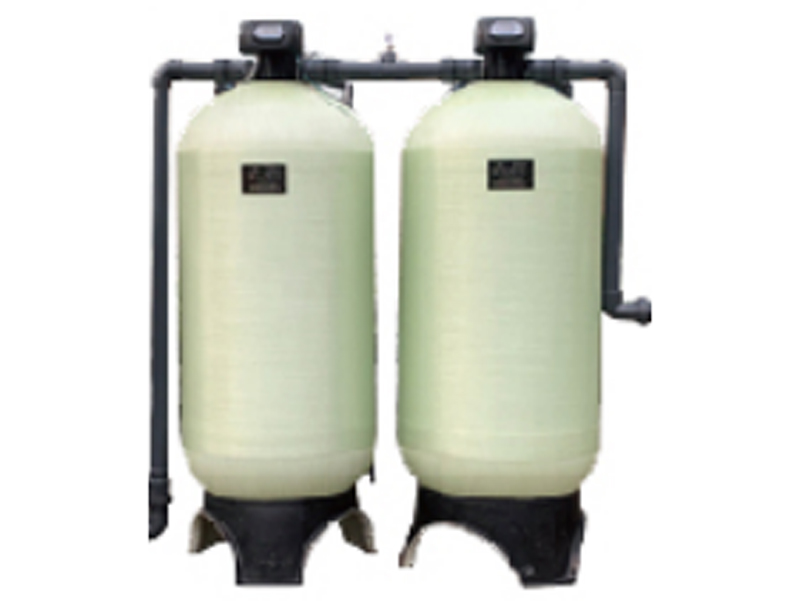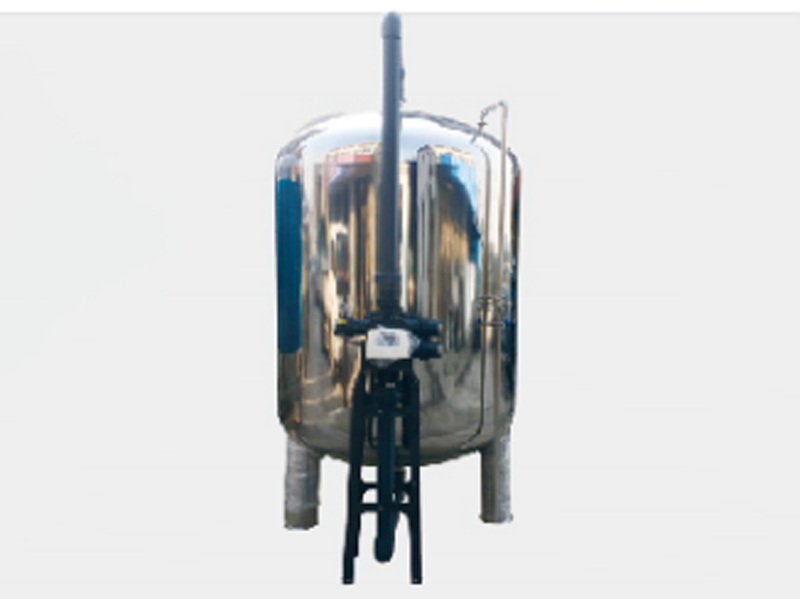Quartz (Manganese) Sand Filter Introduction: The quartz/manganese sand filter is a type of filter that uses quartz or manganese sand as filter media to efficiently remove impurities from water.
It has the advantages of low filtration resistance, large specific surface area, strong acid and alkali resistance, and good pollution resistance. The unique advantage of the quartz/manganese sand filter is that it can achieve adaptive operation through the optimization of filter media and filter design. The filter media has strong adaptability to raw water concentration, operating conditions, pretreatment processes, etc.

During filtration, the filter bed automatically forms an upward loose and a downward dense state, which is beneficial for ensuring the water quality under various operating conditions. During backwashing, the filter media is fully dispersed, and the cleaning effect is good. The sand filter can effectively remove suspended solids in water and has a significant removal effect on pollutants such as colloids, iron, organic matter, pesticides, manganese, viruses, etc. It also has the advantages of fast filtration speed, high filtration accuracy, and large pollutant holding capacity. It is mainly used in power, electronics, beverages, tap water, petroleum, chemical, metallurgical, textile, papermaking, food, swimming pool, municipal engineering, and other fields for deep processing of industrial water, domestic water, circulating water, and wastewater treatment.
Main Characteristics of Quartz/Manganese Sand Filter: The equipment structure of the quartz/manganese sand filter is simple, and the operation can achieve automatic control. It has a large processing flow rate, a small number of backwashing times, high filtration efficiency, low resistance, and easy operation and maintenance.
Working Principle of Quartz Sand Filter: The cylinder of the quartz sand filter is filled with filter media of different particle sizes, which are compacted and arranged from bottom to top according to size. When water flows through the filter layer from top to bottom, the suspended matter in the water flows into the micro pores formed by the upper filter media, and is intercepted by the surface layer of the filter media due to adsorption and mechanical obstruction. At the same time, these intercepted suspended particles overlap and bridge, forming a thin film on the surface of the filter layer, where filtration continues. This is called the thin film filtration effect of the filter media surface layer. This thin film filtration effect not only exists on the surface layer but also occurs when water flows into the middle filter media layer. This mid-layer interception effect is called the permeation filtration effect, which is different from the thin film filtration effect of the surface layer.

In addition, because the filter media are tightly arranged, when the suspended particles in the water flow through the convoluted pores formed by the filter media particles, they have more opportunities and time to collide and contact with the surface of the filter media. As a result, the suspended particles in the water adhere to the surface of the filter media particles and undergo contact coagulation.
The quartz sand filter is mainly used to remove suspended solids in water. This equipment is widely used in various water treatment projects such as water purification, circulating water purification, and sewage treatment in collaboration with other water treatment equipment.
The function of the quartz sand multimedia filter
The quartz sand filter uses one or more filter media to filter water with high turbidity through multiple layers of granular or non-granular materials under pressure, removing suspended impurities and making the water clear. Commonly used filter media are quartz sand, anthracite, and manganese sand, mainly used for water treatment to reduce turbidity, etc.
The quartz sand filter is a pressure filter. Its principle is that when the raw water passes through the filter material from top to bottom, suspended solids in the water are trapped on the surface of the filter layer due to the adsorption and mechanical resistance. When the water flows into the middle of the filter layer, the tightly arranged sand particles in the filter layer allow the particles in the water to have more opportunities to collide with the sand particles. Consequently, coagulants, suspended solids, and impurities on the surface of sand particles adhere to each other, and impurities in the water are trapped in the filter layer, resulting in clear water quality.
Performance characteristics of the quartz sand media filter:
1. The filter system adopts a modular design, and multiple filter units can run in parallel, flexibly combined.
2. The backwash system is simple and easy to operate without a special backwash pump, which ensures the filtering effect.
3. The filter system automatically starts backwashing by time, pressure difference, and other methods. The system runs automatically, and each filter unit performs backwashing in turn, without interrupting water production during backwashing.
4. The water cap is evenly distributed, the water flow is even, the backwash efficiency is high, the backwash time is short, and the backwash water consumption is low.
5. The system has a small footprint and can flexibly arrange filter units according to the actual site conditions.
Post time: Aug-01-2023

